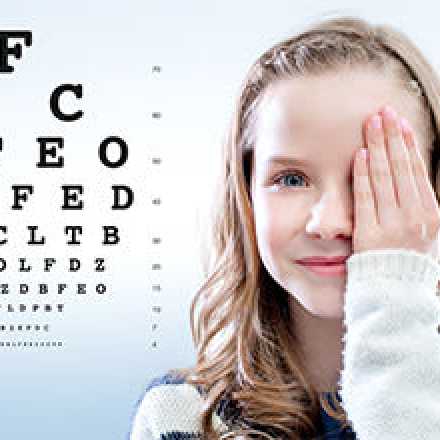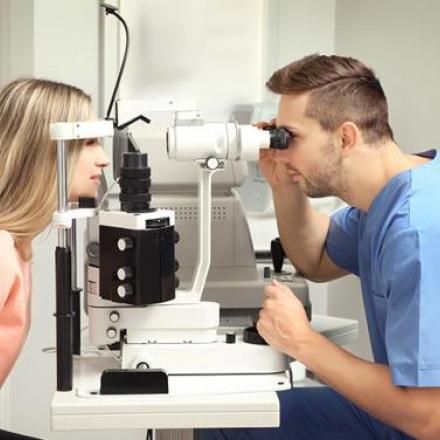
Can Lasik fix Lazy Eye?
LASIK (Laser-Assisted In Situ Keratomileusis) surgery is primarily used to correct vision problems like nearsightedness (myopia), farsightedness (hyperopia), and astigmatism by reshaping the cornea. It is not a treatment for lazy eye, which is a condition known as amblyopia.
Lazy eye, or amblyopia, is a condition where one eye does not develop normal vision during childhood. It typically occurs when there is a significant difference in visual acuity and refractive error (e.g., farsightedness or nearsightedness) between the two eyes, or if one eye has a physical problem that prevents clear vision, such as strabismus (misaligned eyes). The brain begins to rely more on the better-seeing eye, causing the weaker eye to become "lazy."
Why Doesn't LASIK Work for a Lazy Eye?
The reason LASIK can't fix a lazy eye is because it's not designed to address the underlying issues associated with amblyopia. LASIK is all about reshaping the cornea to correct vision errors like nearsightedness, farsightedness, and astigmatism. It doesn't do anything to train the brain to use the weaker eye better or fix the alignment of the eyes.
Causes of lazy eye
Lazy eye, or amblyopia, can be caused by several factors that affect the development of normal vision in one eye.
Some common causes include:
1- Strabismus (Crossed Eyes): When the eyes are misaligned and do not work together as a team, one eye may become dominant, leading to amblyopia. Strabismus is a condition where one eye may turn inward (esotropia) or outward (exotropia).
2- Significant Refractive Error: A significant difference in the refractive error (e.g., nearsightedness, farsightedness, or astigmatism) between the two eyes can lead to amblyopia. The eye with the more severe refractive error may become the weaker eye.
3- Blockage of Vision: If there is a physical obstruction in front of one eye during early childhood, such as a congenital cataract or a droopy eyelid (ptosis), the visual development of that eye may be impaired, resulting in amblyopia.
4- Eye Disease or Injury: Eye conditions or injuries during childhood, such as retinopathy of prematurity (ROP), trauma, or infections, can disrupt the normal visual development of one eye and lead to amblyopia.
5- Genetic Factors: Some individuals may be more predisposed to developing amblyopia due to genetic factors that affect the development of their visual system.
Treatment of Lazy Eye
The treatment for lazy eye typically involves addressing the underlying issues that caused the condition and then training the weaker eye to improve its visual acuity.
Common treatments include:
1- Corrective eyeglasses: In cases where a significant refractive error difference exists between the two eyes, wearing eyeglasses with the appropriate prescription can help equalize vision.
2- Patching therapy: This involves covering the stronger eye with a patch for a certain number of hours each day, forcing the weaker eye to work and improve its vision.
3- Vision therapy: This involves exercises and activities to help improve eye coordination and strengthen the weaker eye's vision.
4- Treating Underlying Issues: In cases where misaligned eyes (strabismus) contribute to the lazy eye, surgical correction to align the eyes properly might be necessary.
How Lasik can help in the treatment of lazy eye?
LASIK doesn't directly address the underlying issues associated with amblyopia. However, in some cases, LASIK may indirectly benefit a person with amblyopia. Here's how:
1- Refractive Error Correction
LASIK is primarily performed to correct refractive errors like nearsightedness (myopia), farsightedness (hyperopia), and astigmatism. These refractive errors can contribute to the development of amblyopia when one eye has significantly different vision than the other. In cases where the stronger eye has a substantial refractive error, LASIK can be used to improve the vision in that eye. By reducing or eliminating the need for glasses or contact lenses in the stronger eye, LASIK can make it easier for individuals to use that eye effectively. When both eyes have balanced and clear vision, it encourages the brain to rely on both eyes equally, which can potentially reduce the suppression of the weaker eye in cases of amblyopia.
2- Reducing Dependence on Glasses
Some individuals with amblyopia wear glasses to correct their refractive errors. LASIK can reduce or even eliminate the need for glasses in certain cases. This can be particularly beneficial for individuals who find glasses uncomfortable or impractical. When the stronger eye no longer requires glasses, it can lead to better comfort and visual clarity, which may encourage individuals to use both eyes more effectively.
3- Improved Quality of Life
LASIK, by improving the overall visual acuity in one or both eyes, can enhance the quality of life for individuals with amblyopia. Better vision in daily activities such as reading, driving, and recognizing faces can lead to improved self-esteem and confidence.
4- Enhancing Visual Clarity.
LASIK can improve the overall clarity and sharpness of vision. This can benefit individuals with amblyopia by providing clearer vision in the affected eye. Improved visual clarity can enhance the individual's ability to perform daily activities, such as reading, driving, and recognizing details and objects. It's important to note that LASIK is not a guaranteed solution for individuals with amblyopia, and its effectiveness depends on individual circumstances. The treatment approach for amblyopia typically involves a combination of methods like wearing glasses, patching the stronger eye, and vision therapy exercises. Surgical interventions may also be necessary if the condition is due to strabismus (misaligned eyes).






